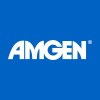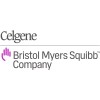
Bendamustine HCL in Relapsed and Primary Refractory Hodgkin Lymphoma
Hodgkin's DiseaseLymphomaThe standard treatment for patients with HL that has not responded to treatment or has come back after treatment is stem cell transplant. When patients are not eligible for transplant or when HL comes back after transplant, there are no standard treatment options. These patients can receive chemotherapy or participate in clinical trials. Bendamustine HCl is a chemotherapy agent that is effective in treating patients with various diseases, including non-Hodgkin's lymphoma, multiple myeloma, and breast cancer. It was recently approved for the treatment of chronic lymphocytic leukemia. In addition, small studies from Eastern Europe have shown that bendamustine HCl is likely effective for treating HL. This study will find out the effect of bendamustine HCl for transplant-ineligible patients with HL that has not responded to or has come back after treatment.

Phase 2 Study of VELCADE (Bortezomib) in Patients With Relapsed Follicular Lymphoma
Relapsed Follicular LymphomaThis is a phase 2, two-arm, non-randomized, open-label, multicenter study evaluating the safety and efficacy of 2 VELCADE-containing regimens. Patients will be treated with either a combination of VELCADE, rituximab, cyclophosphamide, doxorubicin, and prednisone (VELCADE-R-CAP) or a combination of VELCADE, rituximab, cyclophosphamide, and prednisone (VELCADE-R-CP) based on investigator preference. Following completion of the treatment period, patients will receive maintenance therapy with rituximab up to a maximum of 2 years.

A Study for Participants With Relapsed Cutaneous T-Cell Lymphoma
Cutaneous T-Cell LymphomaThe purpose of the study is to determine the efficacy and safety of enzastaurin in participants with Cutaneous T-Cell Lymphoma (CTCL) who failed prior therapies.

A Multi-centre, Open Label, Single-arm Study Intended to Further Investigate the Safety and Efficacy...
Lymphoma (Non-Hodgkin's Lymphoma)Hodgkin's Disease or Multiple Myeloma2 moreThis is a research study intended to further investigate the safety and efficacy of plerixafor in patients with NHL, HD, or MM. Patients who have previously failed stem cell mobilisation attempts or who have previously received more than one autologous or any allogeneic stem cell transplant are not eligible.

Ofatumumab and Bendamustine Followed by Maintenance Ofatumumab for Rituximab Relapsed Indolent B-cell...
LymphomaNon-HodgkinThe purpose of this phase II open label study was is to evaluate the safety and efficacy of ofatumumab and bendamustine followed by maintenance ofatumumab in subjects with indolent B-NHL who had relapsed after Rituximab treatment. A maximum of 53 subjects at least 18 years old with Small lymphocytic, lymphoplasmacytic, marginal zone lymphoma, or follicular lymphoma; Grades 1, 2 and 3a, would have been enrolled (34 in Stage 1 and 19 in Stage 2). Subjects should have had Rituximab-sensitive disease, defined as a Partial Remission (PR) or Complete Remission (CR) to the last rituximab-containing therapy lasting at least 6 months following completion of therapy or subjects should have relapsed or have had disease progression following response to prior rituximab-based therapy a Eastern Cooperative Oncology Group (ECOG) Performance status of 0 1 or 2. During the induction phase, ofatumumab 1000 mg IV on day 1 of each cycle (cycles 1-6) were followed by Bendamustine 90 mg/m2 IV on days 1, 2 of each cycle (cycles 1-6).During the maintenance phase, subjects with a PR or CR after the induction phase received ofatumumab 1000 mg IV every 2 months for 2 years.

AMG 319 Lymphoid Malignancy FIH
CancerChronic Lymphocytic Leukemia12 moreThis is a multi-center, phase 1, open-label first-in-human study of AMG 319 in subjects with relapsed or refractory lymphoid malignancies. This study consists of two parts. The dose exploration in part 1, studies cohorts of 3 subjects with relapsed or refractory lymphoid malignancies and uses a practical continuous reassessment model [CRM] to guide dose escalation and to define the MTD. The dose expansion in part 2 will enroll 20 subjects with CLL at a dose no higher than the MTD and further explore the safety, PK, and clinical activity of AMG 319 in this patient population.

A Phase I, Multicenter, Open-label, Dose-escalation Study to Assess the Safety of Lenalidomide in...
Adult T-cell Leukemia-LymphomaPeripheral T-cell LymphomaTo determine the maximum tolerated dose of lenalidomide in patients with adult T-cell leukemia-lymphoma (ATL) and peripheral T-cell lymphoma (PTCL) who have previously received therapy for ATL and PTCL

Panobinostat Plus Ifosfamide, Carboplatin, and Etoposide (ICE) Compared With ICE For Relapsed Hodgkin...
Hodgkin's LymphomaObjectives: Primary objective: Phase-I: To determine the maximal tolerated dose (MTD) of panobinostat (LBH589) + Ifosfamide + Mesna, Carboplatin and Etoposide (ICE) combination Randomized Phase-II: To estimate the complete response (CR) rate in patients with relapsed and refractory classical Hodgkins Lymphoma (HL) receiving ICE versus PANOBINOSTAT plus ICE therapy Secondary Objectives: To assess the safety and tolerability of the novel combination of PANOBINOSTAT (LBH589) plus ICE versus ICE in patients with relapsed and refractory HL To estimate the overall response rate (CR + partial response PR) To estimate the success rate of stem cell collection in patients eligible for stem cell transplant To estimate the percentage of patients who subsequently undergo autologous stem cell transplantation (ASCT) To estimate the event free survival (EFS) at 1 year after randomization To determine pretreatment expression level of histone deacetylases (HDAC1), HDAC2, and pSTAT3 and Signal transducer and activator of transcription protein (pSTAT6) by Immunohistochemistry (IHC) and correlate the results with treatment response

Study of Lenalidomide to Evaluate Safety and Effectiveness in Patients With Diffuse Large B-Cell...
Diffuse Large B-cell LymphomaThe purpose of this study is to compare lenalidomide to a control drug and see which one delays Diffuse Large B-Cell Lymphoma (DLBCL) disease progression longer.

Study of 5-azacitidine in Combination With Vorinostat in Patients With Relapsed or Refractory Diffuse...
LymphomaThis will be a phase I/II study of 5-azacitidine in combination with vorinostat in patients with relapsed or refractory DLBCL. Combination therapy with methyltransferase inhibitors and histone deacetylase inhibitors is highly synergistic in DLBCL cells, and both classes of drugs can also synergize powerfully with standard anti-lymphoma chemotheraputics such as doxorubicin in pre-clinical studies. We hypothesize that azacytidine + vorinostat combination therapy will be safe and effective in selected patients with relapsed or refractory DLBCL. We also hypothesize that patients demonstrating objective responses to this combination therapy display specific epigenetic signatures, and that a biomarker or gene classifier can be generated which will identify those patients likely to respond.
